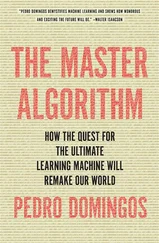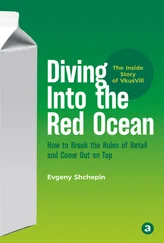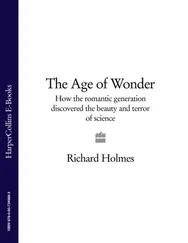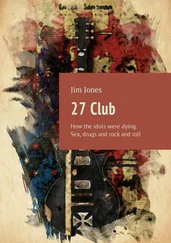Another way to savour the thrill of murder was to attend the funerals of the victims. Many people did so out of respect, as friends or as members of the same community. But far more did so out of curiosity. Still more read about them afterwards. Even four hundred miles away the Caledonian Mercury gave a detailed account of the funeral of the murdered apprentice: its readers were able to follow the precise path of the cortège as it travelled ‘from Ratcliffe-highway, through Well-close-square, up Well-street, to Mill-yard’. In Hull too newspaper readers followed the crowds that turned out for the Marrs’ triple funeral: ‘The people formed a complete phalanx from the [Marrs’] house to the doors of St. George’s church.’ The church itself was so crowded that the funeral procession could only enter ‘with some difficulty’. Then the paper gave the order of the procession, as was normally done for royal weddings and funerals, or the Lord Mayor’s parade:
The body of Mr. Marr;
The bodies of Mrs. Marr and infant;
The father and mother of Mr. Marr;
The mother of Mrs. Marr;
The four sisters of Mrs. Marr;
The only brother of Mr. Marr …
The friends of Mr. and Mrs. Marr.
Newspapers churned out stories, handbills circulated, witnesses were questioned. But none of this got any closer to finding the murderer or murderers. Then, like a recurring nightmare, twelve days after the Marrs’ deaths it all happened again. On 19 December a watchman found John Turner, half-dressed and gibbering with fear, scrambling down New Gravel Lane, a few hundred yards from the Ratcliffe Highway. He had gone to bed early at his lodgings above a public house. After closing time he heard screaming and he went part-way down the stairs, where he saw a stranger bending over a body on the floor. After a panicky attempt to leave via the skylight (he was so frightened he couldn’t find it), Turner tied his bedsheets together and slid out of the window into the yard, shouting, ‘They are murdering the people in the house!’ The watchman was quickly joined by neighbours, and they broke in through the cellar door to find, yet again, bodies lying with their heads beaten in and their throats cut. The body of John Williamson, the publican, was in the cellar; his wife Elizabeth had been in the kitchen with their servant Bridget. Only the Williamsons’ granddaughter, asleep upstairs, had escaped. Once more, money was scattered about, but little of value had been taken; once more, the escape was via the back door and over the yard fence.
The newspapers covered the story widely, but the information they gave was not terribly helpful. The Edinburgh Annual Register described John Turner as being ‘about six feet in height’, while The Times said he was ‘a short man’ with ‘a lame leg’. The Morning Chronicle described his ‘large red whiskers’, but thought he was ‘about five feet nine inches’ and ‘not lame’. Turner, therefore, was either tall, short, or in-between; he was lame, or possibly not; and he had large red whiskers, unless he didn’t. This was the description of a man who had stood in front of journalists at an inquest. Imagine how reliably the papers described the man briefly seen by Turner, or those who had been glimpsed running away from the Marrs’ house.
The police had no more idea where to look for the perpetrators of this new outrage than they had had after the deaths of the Marrs. They arrested plenty of people: people who were violent; people who looked in some way suspicious; people against whom a grudge was held. But one by one they were questioned and released. *In small communities criminals were usually revealed fairly swiftly; in areas with larger populations, handbills with descriptions of the wanted person and offers of rewards generally brought in information, frequently from fellow criminals who found this a convenient way of earning a bit of cash and removing a competitor at the same time. With no response to the initial reward offered after the murder of the Marrs, the only thing the magistrates could think to do was increase the sum. To the initial £50 reward, another £100 was added by the Treasury, and that was increased two days later to an astonishing £700 – a very comfortable middle-class annual income, the sign of increasing government anxiety, verging on panic. After the Williamsons were murdered, another 120 guineas was offered: twenty guineas to anyone who could identify the owner of the weapons, and 100 guineas more if that person were to be convicted of the murders.
One man, arrested on suspicion, attempted to turn king’s evidence, identifying eight men as his fellow murderers. Unable to come up with a motive, the newspapers attributed a love of wholesale slaughter to this mysterious gang. The gang theory was widely popular. A magistrate from the Thames Police Office wrote to his colleague at the Lambeth Street Office that the crime ‘gives an appearance of a gang acting on a system’, but to what end was not clear. Many were caught up: at one point seven men were held for questioning because ‘In the possession of one of them were found two shirts stained with marks very much resembling blood, and a waistcoat carrying also similar marks.’ The men turned out to be hop-pickers, and the stains were vine sap.
The first clue that led towards an arrest was noticed only on the day of the Williamsons’ murder, twelve days after the death of the Marrs, when it finally registered that the peen maul found in the kitchen had the initials ‘JP’ scratched on it. A handbill advertised this, and Mrs Vermiloe, the landlady of the Pear Tree Tavern, reported that her lodger, a Danish sailor named John Petersen, had left his tools in her care on his last shore leave. Petersen was at sea at the time of the murders, but his fellow lodger, John Williams, was said to have shaved off his whiskers the following day; furthermore, he had been seen washing his own stockings at the pump in the yard; and both he and another lodger, John Ritchen, knew Petersen. This was enough for an arrest. On 27 December the magistrates’ court was packed with eager spectators when the news came that Williams had committed suicide in his cell.
The immediate reaction was that the suicide was an outright confession. Anything that contradicted this comforting notion was pushed to one side. On reflection, the questions greatly outweighed the certainties. It was not even clear that John Williams’ name was John Williams – he had told the Vermiloes it was Murphy. Mr Vermiloe, the landlord, had been in prison for debt when his wife directed the police to Williams. The twenty-guinea reward for identifying the maul would pay off at least some of his debts, possibly all of them; how much weight could be given to her evidence? And two men at least had been at the Marrs’: the footprints of two men were found, and at least two men had been seen running down the road. Who were they? Vermiloe had used the maul to chop wood, and both it and the ripping chisel that was also found in the Marrs’ kitchen had been used as toys by his children in the yard – anyone could have taken them.
None of these questions was asked. Instead everyone agreed that they had long suspected Williams. One witness swore that, three weeks before the Williamsons were murdered, he had seen Williams with ‘a long French knife with an ivory handle’. No one else had ever seen that knife and Williams together, but the Gentleman’s Magazine reported that on 14 January 1812, miraculously, a lodger at the Pear Tree had found a blue jacket which he said had belonged to Williams, and it was reported that the inside pocket was marked, ‘as if a bloodstained hand had been thrust into it’. But bloodstains could not definitely be identified until the twentieth century – what the witness meant was that the stain was brown. Furthermore, no one else had seen Williams wear this jacket, nor was there any discussion about who might have had access to it during the period of the murders, or in the following month. Mrs Vermiloe turned it over to the police, at which point they returned to the Pear Tree, searched the house once more and found a clasp knife, ‘apparently dyed with blood’, hidden behind a wall. The Edinburgh Annual Register added that a pair of trousers had been found shoved down under the ‘soil’ in the privy in the Pear Tree yard, which ‘are spoken to very confidently by Williams’ fellow-lodgers’.
Читать дальше












